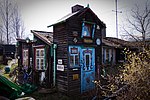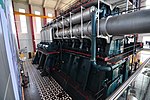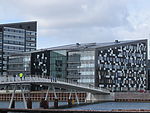Enghave Brygge
Copenhagen city districtsLand reclamation in CopenhagenVague or ambiguous time from July 2014

Enghave Brygge (English: Enghave Quay) is a waterfront area in the Southern Docklands of Copenhagen, Denmark. It is located between Teglholmen to the south and Kalvebod Brygge to the north. Currently an abandoned industrial site, a plan for its redevelopment was adopted in July 2013. The most prominent landmark in the area is the H. C. Ørsted Power Station.
Excerpt from the Wikipedia article Enghave Brygge (License: CC BY-SA 3.0, Authors, Images).Enghave Brygge
Christian Langes Plads, Copenhagen Vesterbro
Geographical coordinates (GPS) Address Nearby Places Show on map
Geographical coordinates (GPS)
| Latitude | Longitude |
|---|---|
| N 55.6555 ° | E 12.5603 ° |
Address
Christian Langes Plads 9
2450 Copenhagen, Vesterbro
Capital Region of Denmark, Denmark
Open on Google Maps









